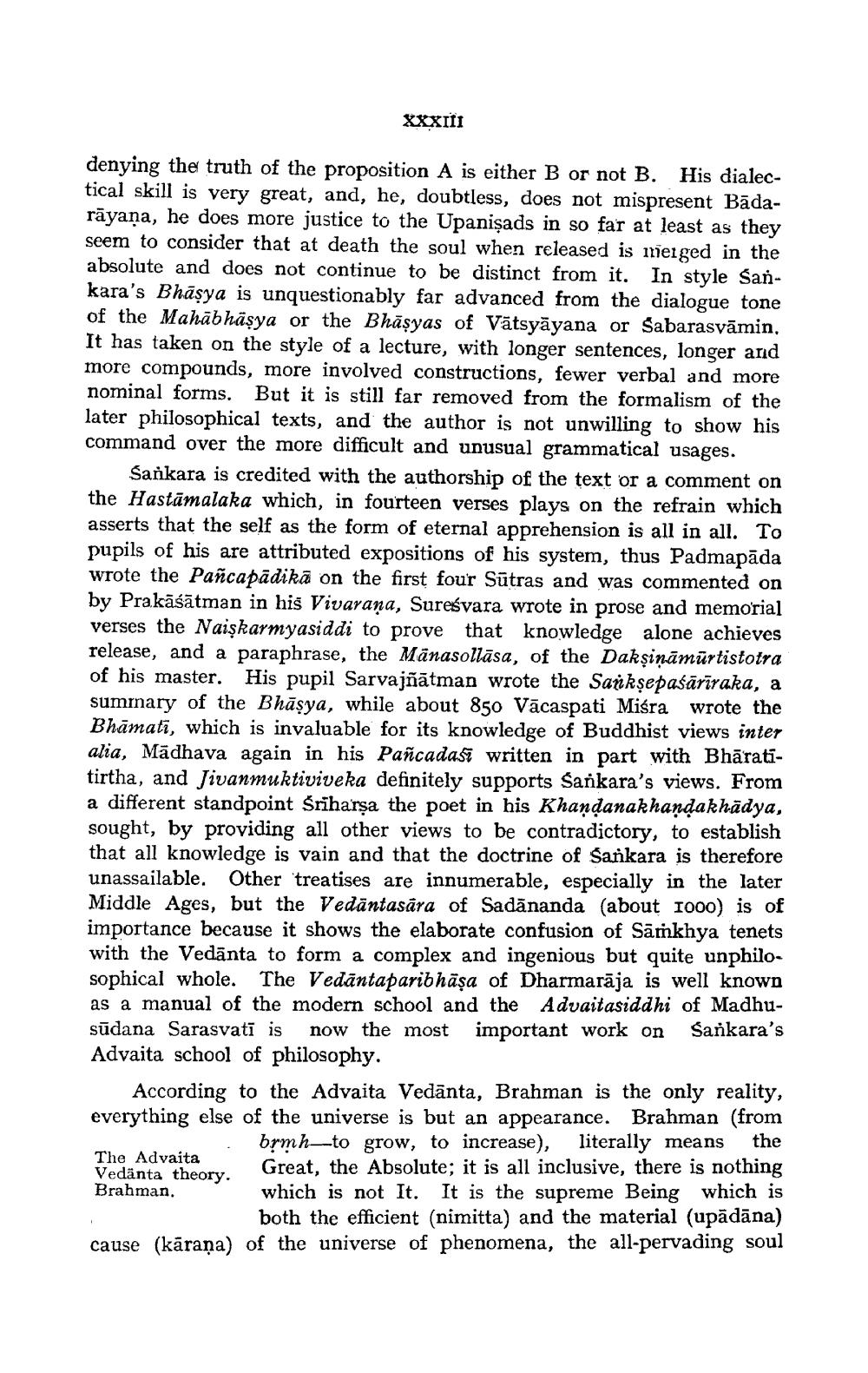________________
XXXIII
denying the truth of the proposition A is either B or not B. His dialectical skill is very great, and, he, doubtless, does not mispresent Bādarāyaṇa, he does more justice to the Upanisads in so far at least as they seem to consider that at death the soul when released is merged in the absolute and does not continue to be distinct from it. In style Šaňkara's Bhāṣya is unquestionably far advanced from the dialogue tone of the Mahabhäṣya or the Bhāṣyas of Vätsyāyana or Sabarasvamin. It has taken on the style of a lecture, with longer sentences, longer and more compounds, more involved constructions, fewer verbal and more nominal forms. But it is still far removed from the formalism of the later philosophical texts, and the author is not unwilling to show his command over the more difficult and unusual grammatical usages.
Sankara is credited with the authorship of the text or a comment on the Hastamalaka which, in fourteen verses plays on the refrain which asserts that the self as the form of eternal apprehension is all in all. To pupils of his are attributed expositions of his system, thus Padmapāda wrote the Pañcapadika on the first four Sutras and was commented on by Prakāśātman in his Vivarana, Sureśvara wrote in prose and memorial verses the Naişkarmyasiddi to prove that knowledge alone achieves release, and a paraphrase, the Mänasollasa, of the Dakṣināmurtistotra of his master. His pupil Sarvajñātman wrote the Sankṣepaśārīraka, a summary of the Bhāṣya, while about 850 Vacaspati Miśra wrote the Bhamati, which is invaluable for its knowledge of Buddhist views inter alia, Madhava again in his Pañcadas written in part with Bharatitirtha, and Jivanmuktiviveka definitely supports Sankara's views. From a different standpoint Sriharṣa the poet in his Khandanakhaṇḍakhadya, sought, by providing all other views to be contradictory, to establish that all knowledge is vain and that the doctrine of Sankara is therefore unassailable. Other treatises are innumerable, especially in the later Middle Ages, but the Vedantasära of Sadananda (about 1000) is of importance because it shows the elaborate confusion of Samkhya tenets with the Vedanta to form a complex and ingenious but quite unphilosophical whole. The Vedantaparibhāṣa of Dharmaraja is well known
as a manual of the modern school and the Advaitasiddhi of Madhusudana Sarasvati is now the most important work on Sankara's Advaita school of philosophy.
According to the Advaita Vedānta, Brahman is the only reality, everything else of the universe is but an appearance. Brahman (from brmh-to grow, to increase), literally means the Great, the Absolute; it is all inclusive, there is nothing which is not It. It is the supreme Being which is both the efficient (nimitta) and the material (upādāna) cause (kāraņa) of the universe of phenomena, the all-pervading soul
The Advaita Vedänta theory. Brahman.




